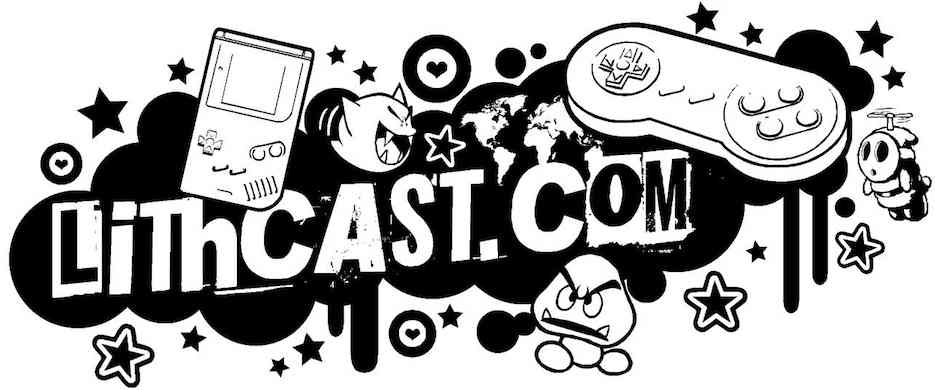View From the Financial Bridge: Nintendo's FY 2010 Results
May/16/10 04:09 PM
By Deborah Grosshandler
Recent headlines invoke fear: investors of the gaming industry are spooked by poor April sales. The United States game revenues dropped 26% in April alone, and one company reported a $889 million loss.
As I reviewed Nintendo’s Consolidated Financial Statements for the year ended March 31, 2010, thing became clear – Nintendo is a long-term player in the gaming industry.
Yes- net sales are down year-to-date 22%. Yes, net operating income is down 35.8% year-to-date. But let us pull back the veil and look behind these headline figures. What do we see?
 We see an established
company experienced in navigating the choppy
waters of the gaming industry. Nintendo has seen
this environment before and has prepared itself.
Their most prominent defensive policy is that
they internally generate capital to fund future
growth.
We see an established
company experienced in navigating the choppy
waters of the gaming industry. Nintendo has seen
this environment before and has prepared itself.
Their most prominent defensive policy is that
they internally generate capital to fund future
growth.
Nintendo’s policy of internally generated capital is implemented through their dividend pay-out policy. The amount of dividends that Nintendo returns to their stockholders is based on their current profit level. They pay-out 33% of their operating income in the form of dividends and keep the remaining 67% for future expansion. This profit retention enables Nintendo to maintain a strong and liquid financial position to prosper in the competitive gaming industry. These retained earnings are used for new technology and product development.
This internal generation of funds is reflected in Nintendo’s cash flow index. Their capital adequacy ratios have moved to reflect this policy.
Nintendo’s Capital Adequacy Ratio:
The capital adequacy ratio is calculated by dividing total shareholder’s equity by total assets. For the last four years, Nintendo’s shareholder’s equity, which includes retained earnings, has increased.
Nintendo’s Retained Earnings (mil. Yen):
Source: Nintendo Co., Ltd. Consolidated Balance Sheets
Their cash account on the consolidated balance sheet between 2009 and 2010 has increased 130,794 million yen. In the current tight, illiquid financial market, where lending pools are drying up: cash is king. Nintendo is making cash and keeping it, as reflected in their balance sheet and retained earnings statement.
Nintendo is not dependent on the vagaries of the financial arena for expansion capital. Nintendo’s management team has securely positioned Nintendo for the current stormy weather.
Another defensive policy measure is that Nintendo has maintained a strong sales foundation in their home country. Their geographical sales reflect this:
Source: Nintendo Co. Ltd.-Segment Information by Business Categories
Nintendo’s Japanese net sales are approximately 1.89 times that of the Americas- the next largest geographical business segment. Their net operating income for Japan is 7.4 times that of the America’s net operating income.
We see from these consolidated statements that 85% of consolidated net sales and 82% of the operating income is from Japan.
The majority of sales and profits are generated in their home markets. This provides more financial control of their revenue generating machinery. Their revenues are less exposed to foreign exchange fluctuations, foreign country political risk, and transportation costs.
Nintendo’s dividend reinvestment and strong home market sales are just two strong financial policies that provide a synergistic force for long-term financial stability even in these precarious times.
Recent headlines invoke fear: investors of the gaming industry are spooked by poor April sales. The United States game revenues dropped 26% in April alone, and one company reported a $889 million loss.
As I reviewed Nintendo’s Consolidated Financial Statements for the year ended March 31, 2010, thing became clear – Nintendo is a long-term player in the gaming industry.
Yes- net sales are down year-to-date 22%. Yes, net operating income is down 35.8% year-to-date. But let us pull back the veil and look behind these headline figures. What do we see?

Nintendo’s policy of internally generated capital is implemented through their dividend pay-out policy. The amount of dividends that Nintendo returns to their stockholders is based on their current profit level. They pay-out 33% of their operating income in the form of dividends and keep the remaining 67% for future expansion. This profit retention enables Nintendo to maintain a strong and liquid financial position to prosper in the competitive gaming industry. These retained earnings are used for new technology and product development.
This internal generation of funds is reflected in Nintendo’s cash flow index. Their capital adequacy ratios have moved to reflect this policy.
Nintendo’s Capital Adequacy Ratio:
|
2007
|
2008
|
2009
|
2010
|
| 69.90%
|
68.20%
|
69.20%
|
75.90%
|
The capital adequacy ratio is calculated by dividing total shareholder’s equity by total assets. For the last four years, Nintendo’s shareholder’s equity, which includes retained earnings, has increased.
Nintendo’s Retained Earnings (mil. Yen):
|
2009
|
2010
|
Yearly addition
|
|
756,201
|
886,995
|
130,794
|
Source: Nintendo Co., Ltd. Consolidated Balance Sheets
Their cash account on the consolidated balance sheet between 2009 and 2010 has increased 130,794 million yen. In the current tight, illiquid financial market, where lending pools are drying up: cash is king. Nintendo is making cash and keeping it, as reflected in their balance sheet and retained earnings statement.
Nintendo is not dependent on the vagaries of the financial arena for expansion capital. Nintendo’s management team has securely positioned Nintendo for the current stormy weather.
Another defensive policy measure is that Nintendo has maintained a strong sales foundation in their home country. Their geographical sales reflect this:
|
|
Japan
|
Americas
|
Europe
|
Consolid. Total
|
|
2010 Consolid. Net Sales (Million Yen)
|
1,217,074
|
643,104
|
481,310
|
1,434,365
|
|
Net Op. Income
|
294,145
|
39,801
|
18,011
|
356,567
|
Source: Nintendo Co. Ltd.-Segment Information by Business Categories
Nintendo’s Japanese net sales are approximately 1.89 times that of the Americas- the next largest geographical business segment. Their net operating income for Japan is 7.4 times that of the America’s net operating income.
We see from these consolidated statements that 85% of consolidated net sales and 82% of the operating income is from Japan.
The majority of sales and profits are generated in their home markets. This provides more financial control of their revenue generating machinery. Their revenues are less exposed to foreign exchange fluctuations, foreign country political risk, and transportation costs.
Nintendo’s dividend reinvestment and strong home market sales are just two strong financial policies that provide a synergistic force for long-term financial stability even in these precarious times.





